Before it turns to a digifilm debate let me say that I'm a Nikon body/lens person who's well invested in Nikon glass. I also shoot a lot of 50 MM and less work and am aware of the shortcomings of digitals for wide angles...such as my perfectly functional 16 mm rectilear fisheye would be a relatively narrow 24 mm. I can't make any argument to buy a DSLR AND expensive new glass for that type of shooting when I have a paid for like new F4s and glass down to 16 mm.
OTOH I have lusted in my heart for the big aperture superfast Nikkor telephoto beasts. In film if I want a 500 mm f4 EDIF it's $5,799.95. Hooked up to a Nikon D70 my 300 mm f4 EDIF would be a pretty equivalent 450 mm f4. And it's paid for. A 300 mm f2.8 film lens is $4,499.95. I would lose VR but my 80 mm-200 mm f2.8 EDIF would match it on the long end plus be an effective ED lens down to what a 120 mm would have been. And yes it's paid for. A Sigma 400 mm ED AF f5.6, that's paid for, becomes a 600 mm f 5.6 film equivalent. A Nikkor 600 mm EDIF f4...only 1 stop faster...is $7,549.95.
For $699.95 I can add a D50 with 18 mm- 55 mm. This would give me a film equivalent of fixed aperture ED glass in 120mm-300mm f2.8, 450mm f4, and 600mm f5.6 and a decent variable aperture short zoom ED glass lens.
$17,849.85 is what it would cost to upgrade my F4s to those specs, minus the about $1,500.00 I could get for the old glass gives me somewhere in the $16K-$16.5K range new and probably still $10K+ used to acquire.
Now here's what else I shoot a lot. Airplanes. I live with the USAF's largest base and the world's largest air show. That and the USAF museum...where everything is actually registered and flyable. Plus the national WACO fly in. Plus the national WWI Vintage Aircraft fly in. And the daily flown Wright B flyer. And the national 1:4 scale model plane fly in. And the scale jet association fly in. Plus an authorized AF1 service/repair site. Any way I get to see lots of airplanes.
I also love to shoot outdoor sports, baseball-soccer-football-rugby-rodeo-auto racing-horse racing type stuff. Also indoor sports such as minor league hockey, college basketball, boxing, WWE.
What I have wanted to shoot is animals in the wild. Birds, deer, moose, elk, bear, eagles, hawks. The big and the bad and the beautiful and the fast.
I'm 49 and a veteran, not in as good of shape as I once was...but I can still pass all the US Army physical specs for age 27 so I'm still pretty virile, just not as agile. I'm also skilled enough and sane enough to carry a weapon into the field in case things ever got too close. I understand fully the thrill of the hunt and the challenge of having to go into the hunted's back yard, I just don't have the need nor desire to kill it for the sport. If I had a moose in my lens at 200 yards then it was a trophy if I decided to shoot it with a high powered rifle. Telephoto shooting and long range firearms are quite similar skills.
Also let me say that I'm not out to dog hunters and I have no moral dilemma with the sport, it just doesn't work for me. One click, I've got a deer that I can hang on the wall...I can't freeze it and eat it, but I don't have to drag it out of the woods either. I also don't want to induce a firearms debate. My comments were only due to the fact that the act of shooting as I describe does have some inherent risks from unfriendly critters, that and there are people who are totally responsible in bearing weapons...others bring far more risk than they eliminate.
To make a short story long any dollar amount that has 5 digits to the left of the decimal has no chance of flying. Anything that has 4 would create a summit with the war department. $699.95 ain't bad.
What do I lose by not having the superfast glass on a film system based off of an F4s?
So far I see:
-The ability to do everything with 1 body.
-The fact that the weight savings in glass and body would be about half.
-Not having the availability of 1/8,000 shutter speed. I seldom used it, but I have.
-Not having the high ISO availability, such as up to 3200 on Kodak B&W. I seldom use them and when I do it's astrophotography which I use a telescope with a film body. They claim ISO 1600 equivalent for the D50? Is that under bright sunlight only or is it a real possibility. I do shoot some 800 speed stuff with jets and night baseball so if the D50 can do ISO 800 film equivalence under all situations I would rarely lose anything. Not having ISO 100 speed...and slower...really bugs me more, and film is getting the same way.
Quality wise...how close will I in all reality be to matching the big aperture megaton film telephotos with this weight reduced digiversion?
FWIW I also have a very sturdy Bogen tripod and monopod so stability is not an issue. Beyond that I am a very good hand held shooter. I routinely shoot down to 1/30 second on film at 200 mm and 1/60 at 300 mm...assuming level ground and no wind. I can't call myself a pro but I shoot enough stuff for money to mostly support my hobby.
Anyone who has went through a similar process I appreciate the advice. Is it worth it to have a DSLR only for long range shooting?
LWW
OTOH I have lusted in my heart for the big aperture superfast Nikkor telephoto beasts. In film if I want a 500 mm f4 EDIF it's $5,799.95. Hooked up to a Nikon D70 my 300 mm f4 EDIF would be a pretty equivalent 450 mm f4. And it's paid for. A 300 mm f2.8 film lens is $4,499.95. I would lose VR but my 80 mm-200 mm f2.8 EDIF would match it on the long end plus be an effective ED lens down to what a 120 mm would have been. And yes it's paid for. A Sigma 400 mm ED AF f5.6, that's paid for, becomes a 600 mm f 5.6 film equivalent. A Nikkor 600 mm EDIF f4...only 1 stop faster...is $7,549.95.
For $699.95 I can add a D50 with 18 mm- 55 mm. This would give me a film equivalent of fixed aperture ED glass in 120mm-300mm f2.8, 450mm f4, and 600mm f5.6 and a decent variable aperture short zoom ED glass lens.
$17,849.85 is what it would cost to upgrade my F4s to those specs, minus the about $1,500.00 I could get for the old glass gives me somewhere in the $16K-$16.5K range new and probably still $10K+ used to acquire.
Now here's what else I shoot a lot. Airplanes. I live with the USAF's largest base and the world's largest air show. That and the USAF museum...where everything is actually registered and flyable. Plus the national WACO fly in. Plus the national WWI Vintage Aircraft fly in. And the daily flown Wright B flyer. And the national 1:4 scale model plane fly in. And the scale jet association fly in. Plus an authorized AF1 service/repair site. Any way I get to see lots of airplanes.
I also love to shoot outdoor sports, baseball-soccer-football-rugby-rodeo-auto racing-horse racing type stuff. Also indoor sports such as minor league hockey, college basketball, boxing, WWE.
What I have wanted to shoot is animals in the wild. Birds, deer, moose, elk, bear, eagles, hawks. The big and the bad and the beautiful and the fast.
I'm 49 and a veteran, not in as good of shape as I once was...but I can still pass all the US Army physical specs for age 27 so I'm still pretty virile, just not as agile. I'm also skilled enough and sane enough to carry a weapon into the field in case things ever got too close. I understand fully the thrill of the hunt and the challenge of having to go into the hunted's back yard, I just don't have the need nor desire to kill it for the sport. If I had a moose in my lens at 200 yards then it was a trophy if I decided to shoot it with a high powered rifle. Telephoto shooting and long range firearms are quite similar skills.
Also let me say that I'm not out to dog hunters and I have no moral dilemma with the sport, it just doesn't work for me. One click, I've got a deer that I can hang on the wall...I can't freeze it and eat it, but I don't have to drag it out of the woods either. I also don't want to induce a firearms debate. My comments were only due to the fact that the act of shooting as I describe does have some inherent risks from unfriendly critters, that and there are people who are totally responsible in bearing weapons...others bring far more risk than they eliminate.
To make a short story long any dollar amount that has 5 digits to the left of the decimal has no chance of flying. Anything that has 4 would create a summit with the war department. $699.95 ain't bad.
What do I lose by not having the superfast glass on a film system based off of an F4s?
So far I see:
-The ability to do everything with 1 body.
-The fact that the weight savings in glass and body would be about half.
-Not having the availability of 1/8,000 shutter speed. I seldom used it, but I have.
-Not having the high ISO availability, such as up to 3200 on Kodak B&W. I seldom use them and when I do it's astrophotography which I use a telescope with a film body. They claim ISO 1600 equivalent for the D50? Is that under bright sunlight only or is it a real possibility. I do shoot some 800 speed stuff with jets and night baseball so if the D50 can do ISO 800 film equivalence under all situations I would rarely lose anything. Not having ISO 100 speed...and slower...really bugs me more, and film is getting the same way.
Quality wise...how close will I in all reality be to matching the big aperture megaton film telephotos with this weight reduced digiversion?
FWIW I also have a very sturdy Bogen tripod and monopod so stability is not an issue. Beyond that I am a very good hand held shooter. I routinely shoot down to 1/30 second on film at 200 mm and 1/60 at 300 mm...assuming level ground and no wind. I can't call myself a pro but I shoot enough stuff for money to mostly support my hobby.
Anyone who has went through a similar process I appreciate the advice. Is it worth it to have a DSLR only for long range shooting?
LWW



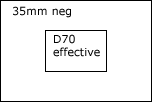
![[No title]](/data/xfmg/thumbnail/42/42253-fef7e43227f484b1a95dd6d85c03bd40.jpg?1619740063)
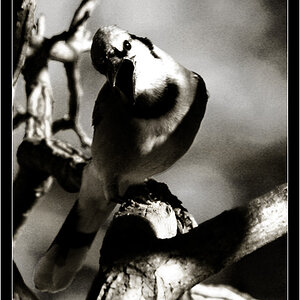
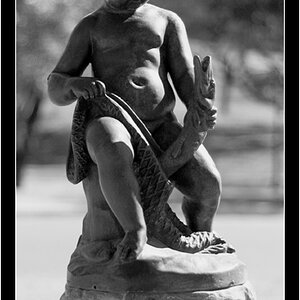
![[No title]](/data/xfmg/thumbnail/32/32696-92b490fbf42036986e97d5e60ff2b35e.jpg?1619735599)
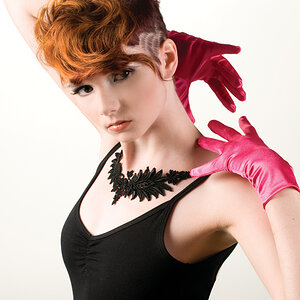
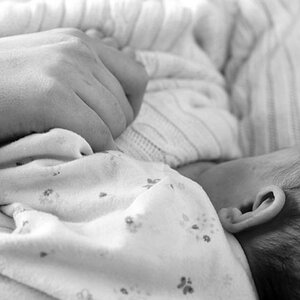
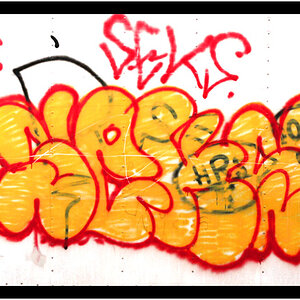
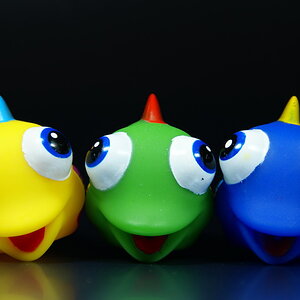

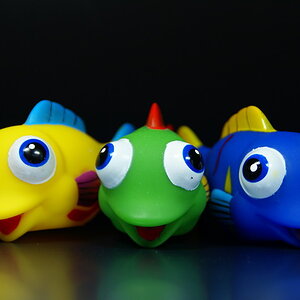
![[No title]](/data/xfmg/thumbnail/32/32929-22e23acc63d6ecb25e5ee941be87121f.jpg?1619735758)
![[No title]](/data/xfmg/thumbnail/38/38292-ab7b4579becf6f3bda3ef5b18219d707.jpg?1619738563)